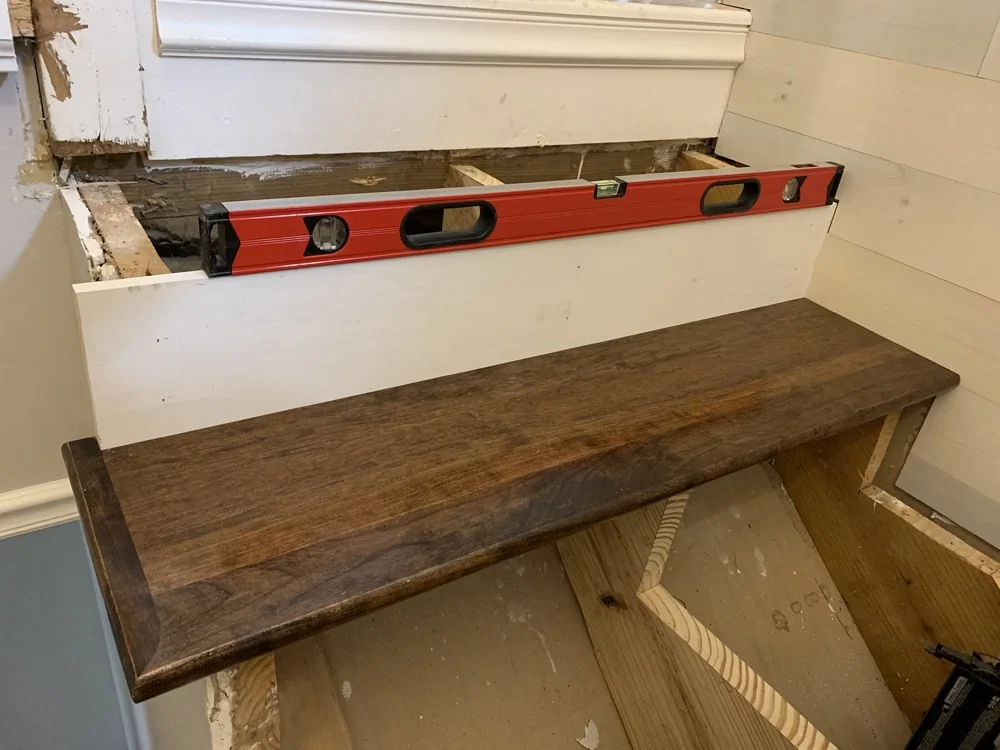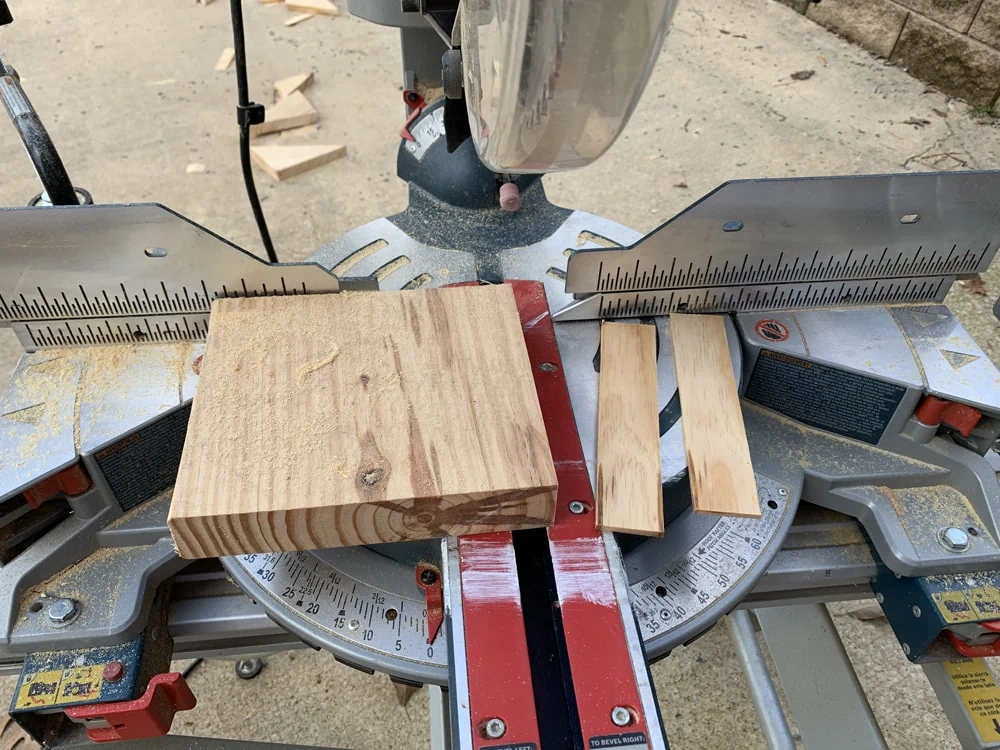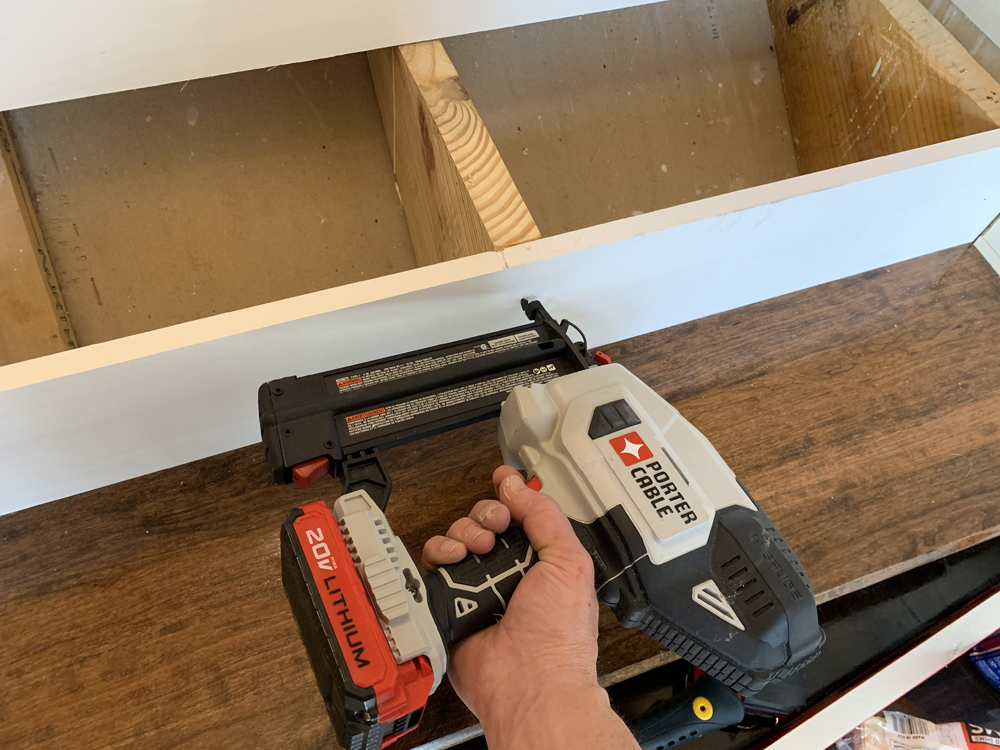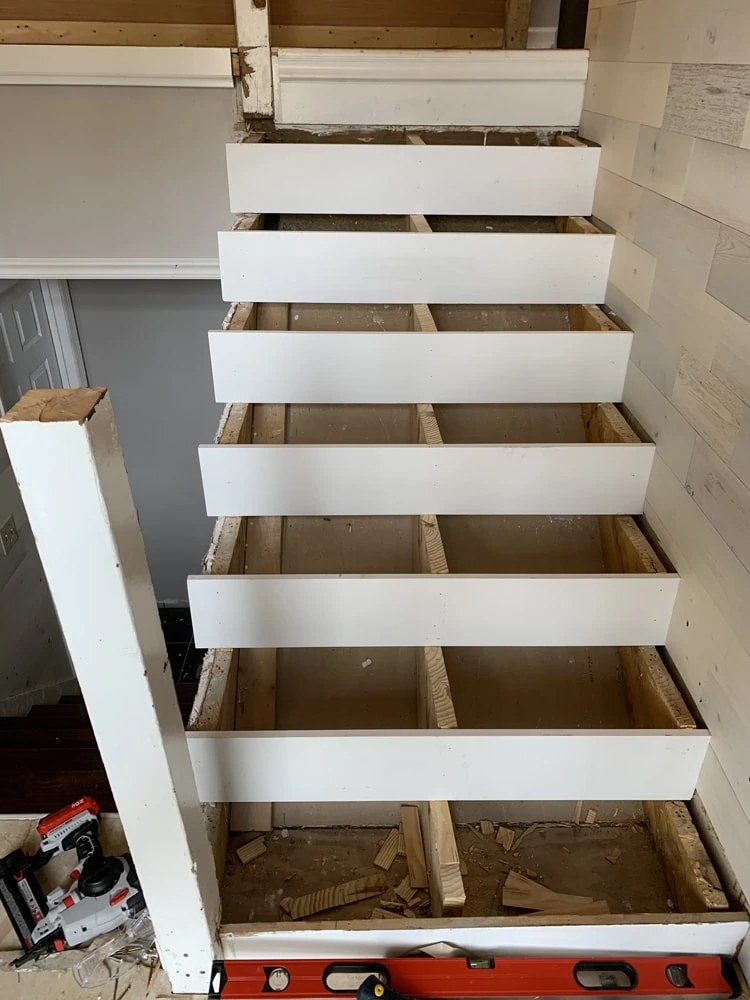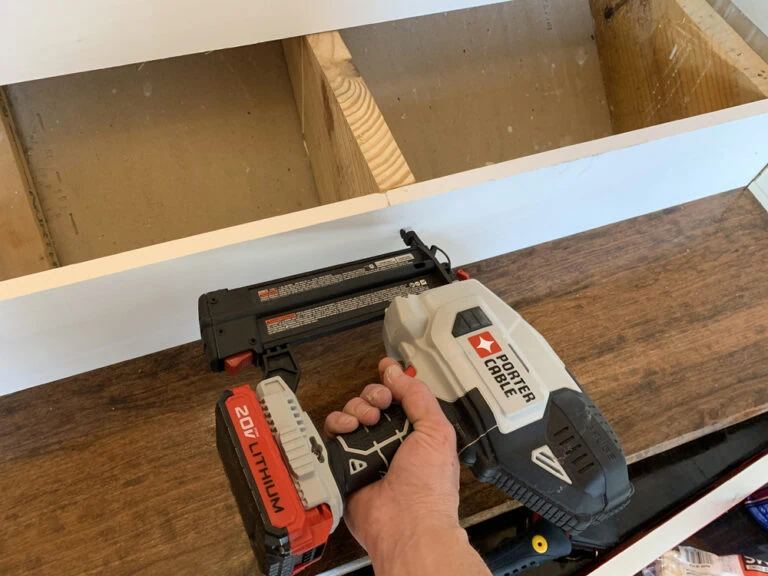Okay, back to my ongoing to stair-remodeling series, which you can follow in my previous blog posts here.
On the last episode, I had to deal with a surprise: constructing and installing a stair stringer.
This time, I’m installing new risers and treads on the upper flight of this split-level staircase (home of the new center stringer).
